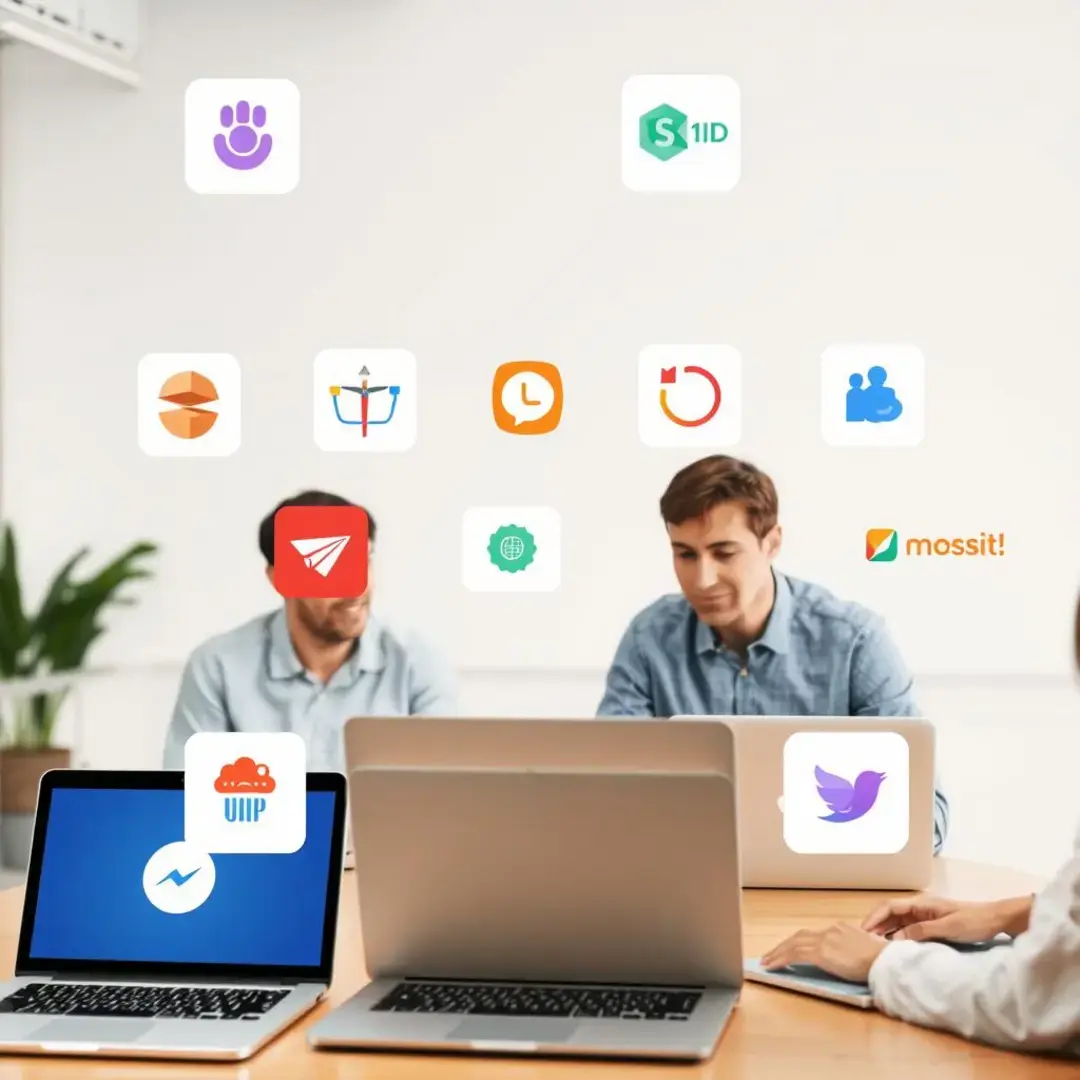Technology for Effective Business Partner Collaboration
Choosing the right collaboration platform

Assessing your needs
Before diving into the world of collaboration technology, it’s crucial to first define your organization’s collaboration goals. Are you aiming to improve communication, enhance productivity, or streamline project management? Understanding what you want to achieve will guide your selection process. Additionally, involving team members in this goal-setting phase can ensure that the chosen tools will meet their needs, fostering greater engagement and adoption.
Next, you should identify key features that are essential to your collaboration goals. Features such as file sharing, real-time editing, and task management can significantly influence your team’s ability to work effectively together. Prioritizing these functionalities will help narrow down your options and ensure that you select a platform that aligns perfectly with your collaboration objectives.
Budget constraints can often dictate the collaboration tools you choose. It’s essential to balance cost with functionality and scalability. As your business grows, the collaboration platform should be able to grow with you, thus avoiding the need for frequent changes. Always evaluate both the initial costs and potential long-term expenses to ensure you’re making a financially sound decision.
Evaluating popular platforms
When selecting a collaboration platform, organizations must consider whether a cloud-based or on-premise solution is best for their needs. Cloud-based solutions offer flexibility, ease of access, and automatic updates, making them an attractive choice for many startups. On the other hand, on-premise solutions may provide greater control and data privacy, which could be essential for companies in highly regulated industries.
It’s vital to compare the specific features offered by popular platforms. Look for robust file-sharing capabilities, intuitive project management tools, and seamless communication options. A good platform should facilitate teamwork rather than complicate it, so ensure your chosen solution aligns with these key functionalities.
Security should be a top priority when choosing a collaboration platform. Investigate the security measures each platform employs, including data encryption, access controls, and compliance with industry standards. Evaluating how a platform handles sensitive data will ultimately affect your business’s risk management strategy and client trust.
Implementing and integrating collaboration technology

Strategies for successful rollout
A successful rollout begins with a well-thought-out implementation plan. This plan should include timelines, responsible parties, and clear milestones to ensure the onboarding process is smooth and efficient. It’s also helpful to pilot the platform with a smaller group before a full-scale launch, allowing you to gather insights and address any potential challenges.
Training is crucial for ensuring that all team members can effectively use the new collaboration tools. Providing comprehensive training sessions, tutorials, and ongoing support will enhance user confidence and adoption rates. Consider creating a dedicated support channel or assigning “super users” who can assist others, fostering a collaborative learning environment.
Defining clear communication protocols will minimize misunderstandings and improve efficiency. Ensure that all team members understand how and when to use the collaboration platform for various tasks. Establishing guidelines on response times, meeting schedules, and document sharing practices will streamline operations and enhance overall productivity.
Integrating with existing systems
Integration with existing systems is critical for creating a seamless workflow. Ensure that your collaboration platform can connect with other essential business applications, such as CRM or ERP systems. This integration will simplify processes, reduce data silos, and promote a more cohesive operational structure across the organization.
Data synchronization is key to maintaining accuracy across different platforms. It’s crucial to implement strategies that ensure data is consistent and up-to-date in all systems. By focusing on data management, you can enhance decision-making capabilities and foster trust among business partners regarding project statuses and information sharing.
Managing API integrations will require a dedicated approach to ensure smooth data flow between systems. This is particularly important as your organization scales and adopts new technologies. Developing robust API management practices will allow for flexibility and adaptability in your tech ecosystem, enhancing the overall collaboration experience.
Maximizing the value of your collaboration platform

Advanced techniques for collaboration
Collaborative document editing and version control are essential features that can significantly enhance teamwork. These functionalities allow team members to contribute in real time while keeping track of changes, ensuring that everyone stays aligned on project developments. This level of transparency not only boosts productivity but also fosters a culture of collaboration within the team.
Project management tools integrated within your collaboration platform can greatly improve workflow efficiency. By assigning tasks, setting deadlines, and monitoring progress, these tools facilitate accountability and ensure projects are completed on time. Leveraging these features can transform how your team manages tasks and drives projects to successful completion.
Efficient information sharing hinges on effective communication strategies. Establishing dedicated channels for different topics can reduce noise and improve clarity in messaging. Utilizing features like instant messaging, video conferencing, and discussion boards within your collaboration tool can further enhance how information flows, making it easier for teams to stay engaged and informed.
Measuring and optimizing collaboration effectiveness
To maximize the benefits of your collaboration platform, it’s crucial to track key metrics such as user engagement and productivity levels. By analyzing how actively team members use the platform and the outcomes they achieve, organizations can identify areas that require improvement. Regularly measuring these metrics will help you make data-driven decisions for further optimization.
Gathering user feedback is instrumental in understanding the strengths and weaknesses of your collaboration tools. Encouraging team members to share their experiences will provide valuable insights that can guide future enhancements. Additionally, analyzing platform usage data can reveal patterns and trends that may inform necessary adjustments, ensuring the tools continue to meet the evolving needs of the organization.
Collaboration technology should never be static; it requires continuous assessment and improvement. Regularly revisiting collaboration goals and gathering feedback from users can lead to the evolution of your processes and tools. By staying proactive about improvements, organizations can maintain a competitive edge and foster a culture of innovation and adaptability.
Future trends in business partner collaboration technology

Emerging technologies and their impact
Artificial Intelligence (AI) and machine learning are poised to revolutionize collaboration by automating repetitive tasks and personalizing user experiences. These technologies can analyze vast amounts of data to provide tailored recommendations and insights, enhancing productivity. As these tools evolve, businesses will benefit from more efficient operations and informed decision-making processes.
Blockchain technology may provide enhanced security measures for collaborative processes. With decentralized data management, businesses can ensure greater transparency and traceability, fostering trust among partners. This security advantage is particularly relevant in industries where data confidentiality is paramount, making blockchain an intriguing consideration for future collaboration strategies.
Virtual and augmented reality tools continue to evolve, presenting unique opportunities for enhanced collaboration. These technologies offer immersive environments where teams can interact and collaborate as if they were in the same room, despite geographical distances. As these tools become more accessible, organizations may find them to be invaluable assets in fostering deeper connections and collaboration among partners.
Preparing for the future of collaboration
Preparing for the future of collaboration requires a forward-looking technology strategy that anticipates emerging trends. Organizations should regularly assess their technology stack and remain open to integrating new solutions that enhance collaboration. By being proactive, companies can stay ahead of the curve and adapt to the ever-changing landscape of business partnerships.
Investing in continuous learning is essential for teams to effectively leverage collaboration technologies. Providing ongoing training opportunities and workshops can empower employees to adopt new tools and maximize their potential. As technologies advance, organizations must ensure their teams remain equipped with the skills necessary to utilize these tools effectively.
Finally, staying informed about industry best practices and innovations is crucial for maintaining an effective collaboration strategy. Regularly attending conferences, engaging with industry publications, and participating in networking events can help organizations remain connected to the latest trends. This knowledge will empower businesses to make informed decisions regarding their collaboration technology and practices.












